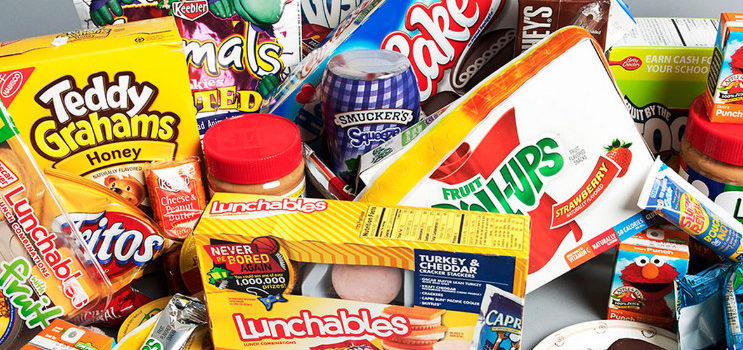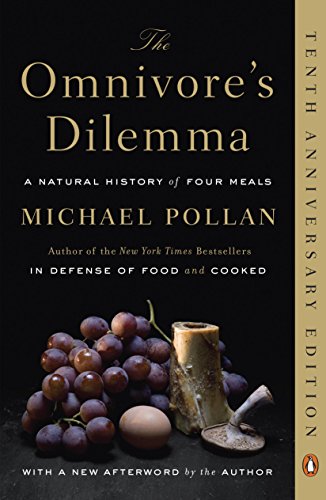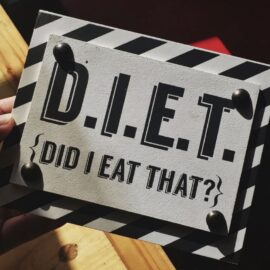

This article is an excerpt from the Shortform summary of "The Omnivore's Dilemma" by Michael Pollan. Shortform has the world's best summaries of books you should be reading.
Like this article? Sign up for a free trial here .
What are processed foods? Why do we have them, and why don’t we just eat natural whole foods? Learn about the history here.
Why Processed Foods?
Processing food to preserve it is an age-old preoccupation. We first learned to salt, dry, cure, and pickle food; then to can, freeze, and vacuum-pack it. These advances freed people from the constraints of location and season, as well as from times of scarcity and plenty.
At the end of World War II, we went beyond preserving, to trying to improve on nature, using technology to create new products and marketing to sell their qualities and convenience. For instance:
- Butter became something better: margarine.
- Fruit juice evolved into fruit drinks.
- Cheese became spreadable.
Corn became a key component of processed foods. In fact, it’s hard to find a processed food not made with corn or soybeans today.
Food companies are always developing new processed foods, and redesigning current foods to enhance flavor, texture, and packaging. For instance, the Belle Institute, which is the R&D lab for General Mills, is always trying to come up with novel breakfast cereals because the cereals group generates higher profits for GM than any other.
Breakfast cereal exemplifies processed food: It’s a few cents’ worth of corn (corn meal, corn starch, and corn sweetener) morphed into $4 worth of processed food. Vitamins and minerals are added, plus other ingredients for color and taste. Then it’s packaged and branded as having added value.
One advantage food processors have is that they can often substitute ingredients without affecting appearance or taste. So if the price of an ingredient like hydrogenated fat from corn goes up, they replace it with fat derived from soy. That’s why labels say: “Contains one or more of the following: corn, soybeans or sunflower oil.”
Processors keep coming up with new ways to package and sell the corn glut. Engineering processed food from corn is supply-driven — no one clamored for synthetic cheese, but consumers bought it once it was invented and marketed.
Processed Foods for Corporations
However, no matter how many new products processors make from corn, humans can eat only so much food (about 1,500 pounds a year) regardless of how cheap it gets. This is referred to as inelastic demand, or the “fixed stomach.”
The challenge for food companies is to keep profits from falling when demand is maxed out. Their profits are growing at about 1 percent a year (the same as the rate of population growth), which is too little by Wall Street standards.
Processed food companies have to figure out how to get people to spend more for the same amount of food and/or get them to eat more. Part of the answer is to further process or complicate foods to add value.
Further processing a product adds to shelf life, allowing the company to market it globally. It also allows a company to capture more of the money a consumer spends on food. Here’s how that works:
- Of a dollar spent on eggs, 40 cents goes back to the farmer; of a dollar spent on corn sweetener only 4 cents goes to the farmer. Processing companies get the rest.
- When Tyson devised the chicken nugget in 1983, chicken became a high value-added product, and most of the money Americans spent on chicken moved from the farmer’s pocket to the processor’s.
Processors need to sell more than a product itself: They also sell convenience, novelty, and supposed health benefits.
However, a value-added product made from a cheap commodity can itself become a commodity, so a processor has to keep doing more.
- For example, when flour made from wheat became a commodity, the company (General Mills) processed it further, creating bleached, and later, enriched flour. (They sold an image of purity and healthfulness).
- However, even enriched white flour became a commodity, so General Mills invented cake mixes and sweetened breakfast cereals (selling convenience and sweeteners). The company is now selling health benefits: Its cereals are marketed as heart-healthy (so-called nutraceutical) foods.
———End of Preview———

Like what you just read? Read the rest of the world's best summary of Michael Pollan's "The Omnivore's Dilemma" at Shortform . Learn the book's critical concepts in 20 minutes or less .
Here's what you'll find in our full Omnivore's Dilemma summary :
- What does Omnivore's Dilemma mean?
- Why is industrial farming so bad for you and the environment?
- How did corn and its byproducts (like corn syrup) end up in tens of thousands of foods?
- How is Industrial Organic food like at Whole Foods not much better than massive industrial farming?
- What happens when you try to forage for your own food?






